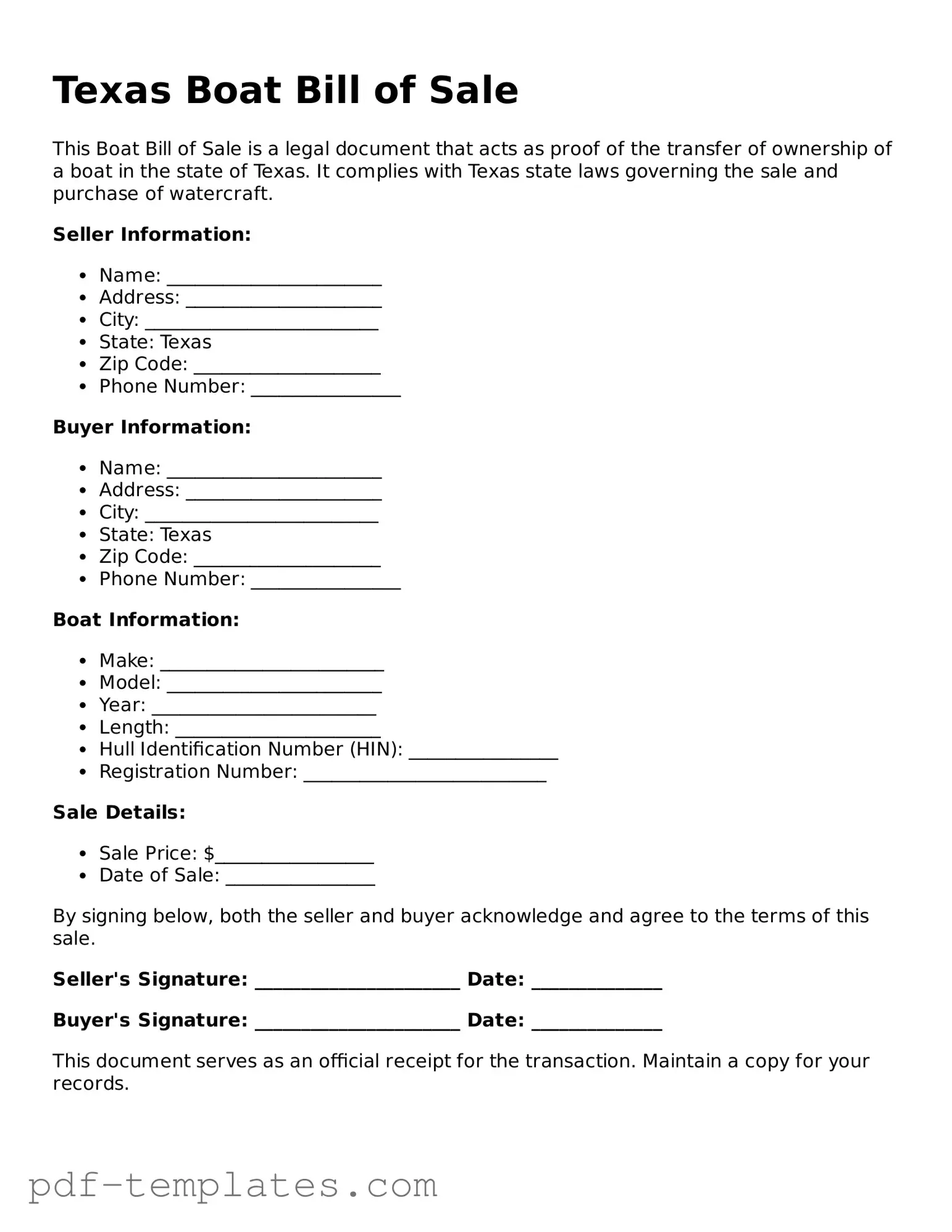The Texas Boat Bill of Sale form is similar to the Vehicle Bill of Sale. Both documents serve as proof of the transfer of ownership for personal property. When someone sells a vehicle, they complete this form to document the transaction and provide the buyer with a record of the sale. Just like the boat bill, it includes essential details such as the buyer's and seller's information, the description of the vehicle, and the sale price. This ensures that both parties have a clear understanding of the terms of the sale and protects their interests.
Another document that resembles the Texas Boat Bill of Sale is the Motorcycle Bill of Sale. This form is used specifically for the sale of motorcycles, much like the boat bill is tailored for boats. It captures similar information, including the make, model, and VIN of the motorcycle, as well as the buyer and seller details. Both forms aim to provide a legal record of the transaction, ensuring that the transfer of ownership is documented and recognized by the state.
The RV Bill of Sale also shares similarities with the Texas Boat Bill of Sale. When someone sells a recreational vehicle, they use this document to outline the terms of the sale. It includes critical information about the RV, such as its identification number and condition, mirroring the details found in a boat bill. Both documents help establish a clear understanding between the buyer and seller, making the transaction smoother and legally sound.
The Trailer Bill of Sale is another document that parallels the Texas Boat Bill of Sale. This form is utilized when a trailer is sold, capturing vital details about the trailer, including its size, weight, and identification number. Just like the boat bill, it serves as a record of the transaction, ensuring that both parties are protected and have a clear understanding of the sale. This document is essential for registering the trailer with the state after the sale.
In addition to the various vehicle-related bills of sale discussed, the importance of having protective agreements like the Hold Harmless Agreement cannot be overlooked. Such a document serves to safeguard individuals from liabilities arising from the actions of others, creating a safety net during transactions. For more comprehensive information on how to create and implement this agreement, you can view the pdf.
Lastly, the Equipment Bill of Sale is comparable to the Texas Boat Bill of Sale. This document is used for the sale of various types of equipment, from construction machinery to farming tools. It includes similar information regarding the buyer, seller, and the equipment being sold. Both forms are designed to formalize the sale, providing legal protection for both parties and ensuring that ownership is clearly transferred.
